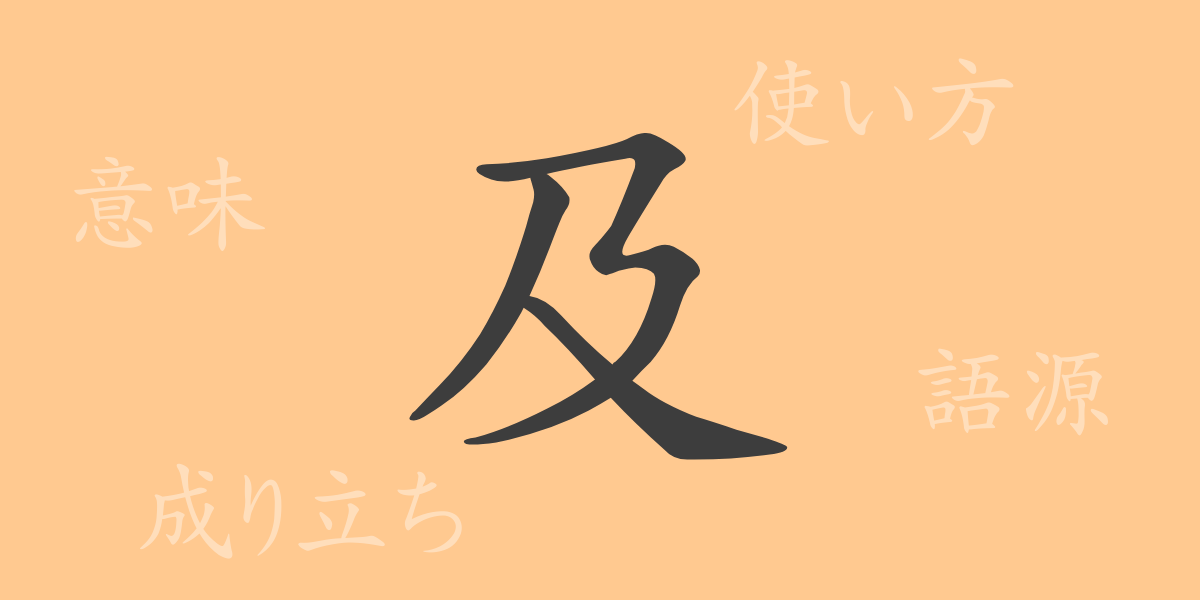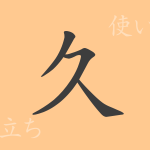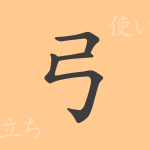The charm of the Japanese language lies in its rich expressiveness. Common-use kanji characters are integral to Japanese culture due to their diversity and profound meanings. This time, we spotlight the kanji “及” (きゅう, kyuu), exploring its origins, meanings, uses, and related idioms and proverbs. By understanding the power of a single kanji, we can deepen our comprehension of the Japanese language.
Origin of 及 (語源)
The kanji “及” (きゅう, kyuu) developed from ancient Chinese pictographs. Originally, it depicted a hand reaching out to grasp something, illustrated in ancient oracle bone scripts with a line extending from a hand. Over time, its form became more abstract, evolving into the modern “及” (きゅう, kyuu). This character conveys meanings such as “to reach” and “to extend,” and has been used in both Chinese and Japanese for centuries.
Meaning and Usage of 及 (きゅう, kyuu)
The kanji “及” (きゅう, kyuu) is used in expressions like “及ぶ” (およぶ, oyobu), “及び” (および, oyobi), and “及ばず” (およばず, oyobazu), indicating reaching, influencing, or extending to a certain range. It is also used in comparisons, as in “彼には及ばない” (かれにはおよばない, kare ni wa oyobanai), meaning “not as good as him.” Thus, “及” (きゅう, kyuu) is widely used in both literal and figurative contexts.
Reading, Stroke Count, and Radical of 及 (きゅう, kyuu)
The readings and basic information of the kanji “及” (きゅう, kyuu) are as follows:
- Reading: On-yomi (Chinese reading) is “キュウ” (kyuu); Kun-yomi (Japanese readings) are “およ・ぶ” (oyobu), “およ・び” (oyobi), and “およ・ぼす” (oyobosu).
- Stroke count: 4 strokes
- Radical: 又 (また, mata), meaning “again” or “hand.”
Idioms, Proverbs, and Expressions Using 及 (きゅう, kyuu)
There are many idioms, proverbs, and expressions that include the kanji “及” (きゅう, kyuu). Here are some examples:
- 及第点 (きゅうだいてん, kyuudaiten): Passing mark
- 手及び (ておよび, te oyobi): Within reach
- 気及び (きおよび, ki oyobi): Being considerate
- 井の中の蛙大海を知らず (いのなかのかわずたいかいをしらず, i no naka no kawazu taikai o shirazu): “A frog in a well does not know the great ocean,” meaning being complacent with one’s limited knowledge or experiences.
Understanding these expressions enriches our appreciation of the nuances in the Japanese language.
Summary on 及 (きゅう, kyuu)
The kanji “及” (きゅう, kyuu) possesses a wide array of meanings and uses, far beyond its simple shape. Its role in Japanese is crucial not only for indicating physical range but also for expressing comparison and influence. This exploration has highlighted the depth of “及” (きゅう, kyuu) and the richness of Japanese expression. When you encounter “及” (きゅう, kyuu) in daily conversation or writing, consider its historical and cultural background to gain a deeper understanding of the language.

























